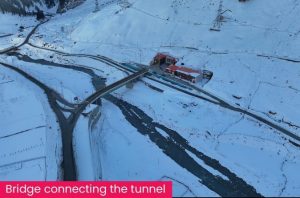- Feedback
- Sitemap
- Skip to Main Content
- Screen Reader Access
- A+ A A -
- A A
- Control Room No. - 9205949400, 011-26768950
Sonamarg Tunnel: A step towards regional prosperity
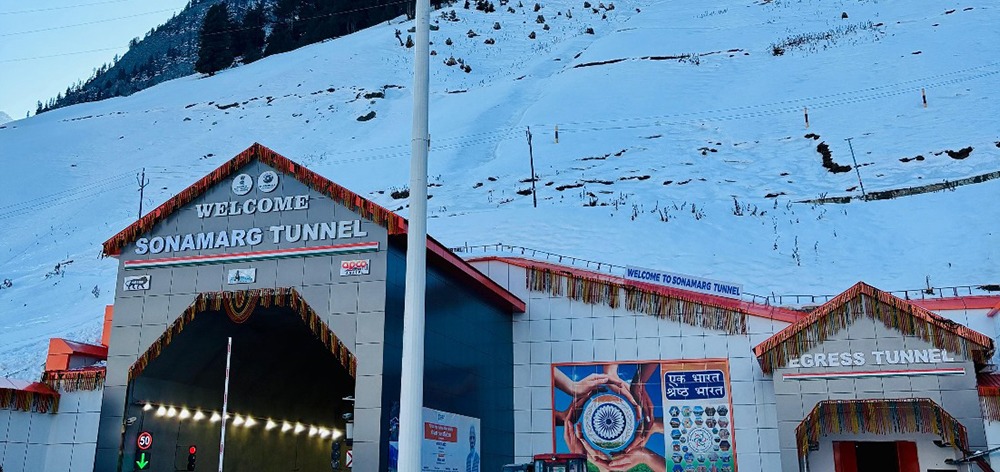
Sonamarg Tunnel: A step towards regional prosperity
The Union government has made significant strides in developing infrastructure and enhancing the National Highways (NH) network in the UT of Jammu and Kashmir over the past decade. In line with the vision of Hon’ble Prime Minister Shri Narendra Modi, inauguration of the Sonamarg Tunnel on January 13, 2025 marked a key milestone in regional infrastructure growth. This advanced, two-lane bi-directional tunnel bypasses the avalanche-prone stretches on NH-1. It ensures seamless, all-weather connectivity between Srinagar and Sonamarg and further connecting the Ladakh region with rest of the country. Built at a cost of Rs. 2,717 crores by the National Highways and Infrastructure Development Corporation Ltd (NHIDCL), the tunnel is set to revolutionize travel in the area.
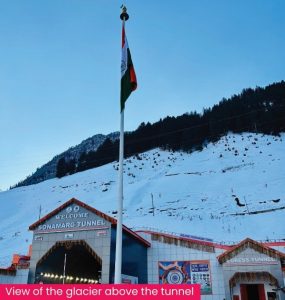
Spanning 12 km in total, the main Sonamarg tunnel measures 6.4 km and also includes an egress tunnel and approach roads. The approach road towards Srinagar side has an additional lane for slow-moving vehicles, this ensures uninterrupted flow of traffic in the main lanes. Located at an altitude of over 8,652 feet above sea level, the tunnel project guarantees uninterrupted access throughout the year, even in snowfall and extreme weather conditions. The tunnel, constructed using the New Austrian Tunnelling Method (NATM) suitable for tunnelling in fragile and complex geological areas is a technological milestone for tunnel construction in the Himalayas. The tunnel is equipped with Integrated Tunnel Management System (ITMS) that includes several advanced features like – Public Address System, Electrical Fire Signalling System, Radio Re-Broadcast System (FM), Dynamic Road Information Panel (DRIP), Entrance Variable Message Signs (EVS), Automatic Mechanical Boom Barriers and a SCADA System. The tunnel is designed to accommodate around 1,000 vehicles per hour, making it a faster and safer route for both civilian and defence purposes.
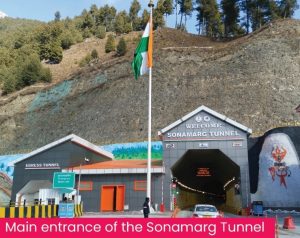
The Sonamarg Tunnel addresses long-standing challenges faced by the people of Jammu & Kashmir and Ladakh. Earlier, the region’s residents struggled with frequent road closures due to avalanches, heavy snowfall and landslides, leading to shortages of essentials like food and medicine. Additionally, winter weather rendered the popular tourist destination of Sonamarg inaccessible, severely affecting local livelihoods. The construction of the tunnel alleviates these problems by ensuring consistent access to hospitals, essential supplies and tourist spots, thus improving the quality of life for residents. The tunnel has now unlocked new possibilities for the region including for winter sports enthusiasts, who can now enjoy easy access to the Thajiwas Glacier and adventure activities like skiing and trekking in the winter.
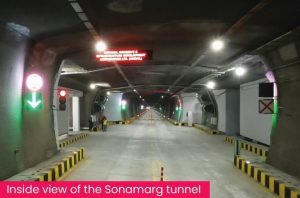
This crucial development, along with the under-construction Zojila Tunnel on the Srinagar-Leh Highway, will enhance year-round access to key destinations such as Baltal (Holy Amarnath Cave), Kargil and Leh, while also reducing reliance on expensive air travel.
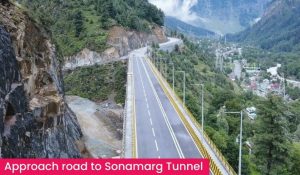
By improving connectivity, the tunnel not only enhances new economic opportunities, but will also strengthen defence infrastructure in the region. This transformative project embodies NHIDCL’s commitment to reshaping Jammu and Kashmir’s infrastructure, driving economic growth and fostering prosperity in the region. The Sonamarg Tunnel marks the beginning of a new era for this strategically vital area.
